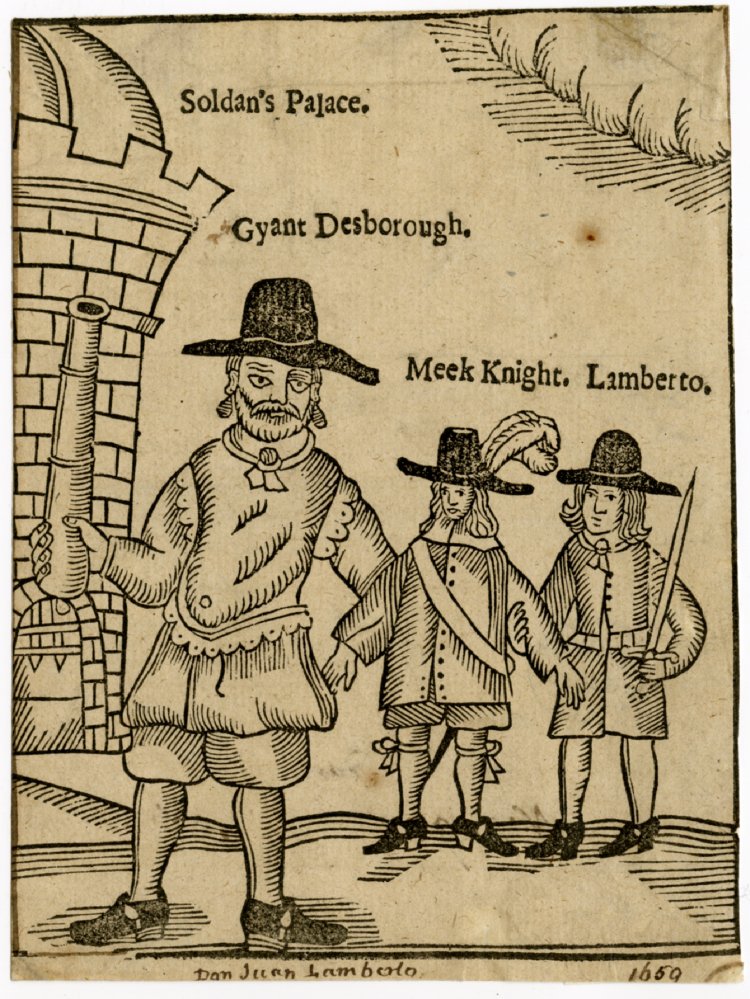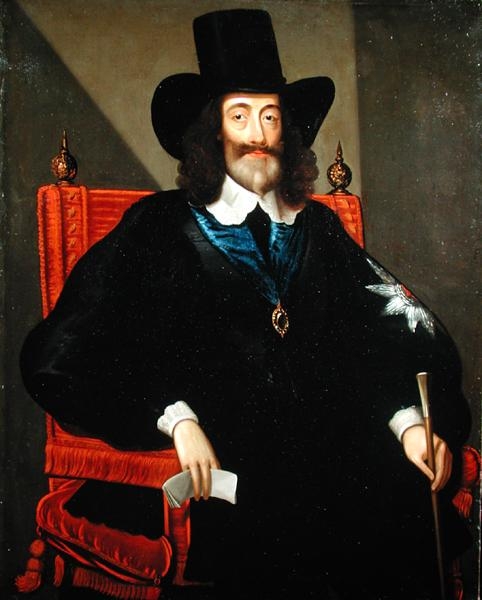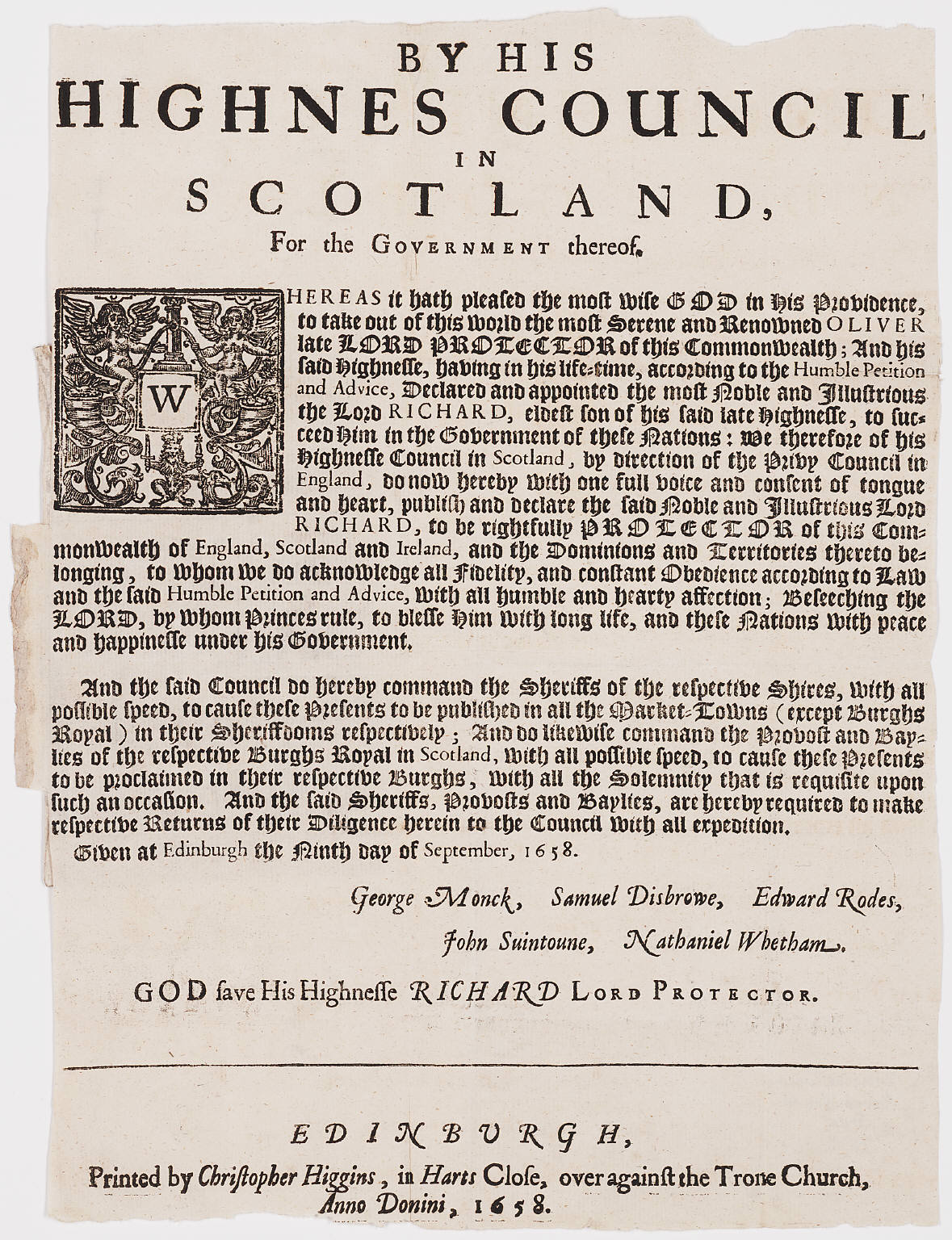|
Woodstock (novel)
''Woodstock, or The Cavalier. A Tale of the Year Sixteen Hundred and Fifty-one'' (1826) is a historical novel by Sir Walter Scott, one of the Waverley novels. Set just after the English Civil War, it was inspired by the legend of the Good Devil of Woodstock, which in 1649 supposedly tormented parliamentary commissioners who had taken possession of a royal residence at Woodstock, Oxfordshire. The story deals with the escape of Charles II in 1652, during the Commonwealth, and his final triumphant entry into London on 29 May 1660. Composition and sources Scott began composing ''Woodstock'' at the very end of October 1825. He appears to have made rapid progress at first, but there were many interruptions during December and the second volume was not finished until 11 February 1826. He completed the final volume on 26 March. The ''History of England'' by David Hume (1754‒62), which Scott admired above all others, gave him most of what he needed for the historical background, thou ... [...More Info...] [...Related Items...] OR: [Wikipedia] [Google] [Baidu] |
A & C Black
A & C Black is a British book publishing company, owned since 2002 by Bloomsbury Publishing. The company is noted for publishing '' Who's Who'' since 1849. It also published popular travel guides and novels. History The firm was founded in 1807 by Charles and Adam Black in Edinburgh. In 1851, the company purchased the copyrights to Sir Walter Scott's ''Waverly'' novels for £27,000. The company moved to the Soho district of London in 1889. During the years 1827–1903 the firm published the seventh, eighth and ninth editions of the ''Encyclopædia Britannica''. This was purchased from Archibald Constable after his company's failure to publish the seventh edition of the encyclopedia. Adam Black retired in 1870 due to his disapproval of his sons' extravagant plans for its ninth edition. This edition, however, would sell half a million sets and was released in 24 volumes from 1875 to 1889. Beginning in 1839, the firm published a series of travel guides known as ''Black's Guide ... [...More Info...] [...Related Items...] OR: [Wikipedia] [Google] [Baidu] |
Edinburgh Edition Of The Waverley Novels
The Edinburgh Edition of the Waverley Novels by Walter Scott appeared in thirty volumes between 1993 and 2012. Published by Edinburgh University Press, it was the first complete critical edition of the novels. History On 22 June 1983 Archie Turnbull, the Secretary of Edinburgh University Press, announced that his Press Committee had authorised him to investigate the feasibility of undertaking a critical edition of the novels and related fiction of Walter Scott and to welcome expressions of interest. On 17 February 1984 a group of scholars and other interested parties met at a conference organised by David Daiches, making the decision that (in principle) the new edition should be based on early editions rather than the revised texts in the final 'Magnum' edition of 1829–33, and that David Hewitt of the University of Aberdeen should be Editor-in-Chief. After three years' detailed research the early-text policy was confirmed at a further conference in January 1987, with David Nordloh ... [...More Info...] [...Related Items...] OR: [Wikipedia] [Google] [Baidu] |
The Westminster Review
The ''Westminster Review'' was a quarterly United Kingdom, British publication. Established in 1823 as the official organ of the Philosophical Radicals, it was published from 1824 to 1914. James Mill was one of the driving forces behind the liberalism, liberal journal until 1828. History Early years In 1823, the paper was founded (and funded) by Jeremy Bentham,I Ousby ed., ''The Cambridge Guide to Literature in English'' (CUP 1995), p. 1008. who had long pondered the possibility of establishing a journal for propagating Radical views. The first edition of the journal (January 1824) featured an article by James Mill (continued in the second by his son John Stuart Mill), which served as a provocative reprobation of a rival, more well-established journal, the ''Edinburgh Review'', castigating it as an organ of the Whigs (British political party), Whig party, and for sharing the latter's propensity for fence-sitting in the aristocratic interest. The controversy drew in a wide public ... [...More Info...] [...Related Items...] OR: [Wikipedia] [Google] [Baidu] |
Oliver Cromwell
Oliver Cromwell (25 April 15993 September 1658) was an English politician and military officer who is widely regarded as one of the most important statesmen in English history. He came to prominence during the 1639 to 1651 Wars of the Three Kingdoms, first as a senior commander in the Parliamentarian army and then as a politician. A leading advocate of the execution of Charles I in January 1649, which led to the establishment of the Republican Commonwealth of England, Scotland and Ireland, he ruled as Lord Protector from December 1653 until his death in September 1658. Cromwell nevertheless remains a deeply controversial figure in both Britain and Ireland, due to his use of the military to first acquire, then retain political power, and the brutality of his 1649 Irish campaign. Educated at Sidney Sussex College, Cambridge, Cromwell was elected MP for Huntingdon in 1628, but the first 40 years of his life were undistinguished and at one point he contemplated emigration to ... [...More Info...] [...Related Items...] OR: [Wikipedia] [Google] [Baidu] |
Thomas Harrison (soldier)
Major-General Thomas Harrison, baptised 16 July 1616, executed 13 October 1660, was a prominent member of the radical religious sect known as the Fifth Monarchists, and a soldier who fought for Parliament and the Commonwealth in the Wars of the Three Kingdoms. One of those who approved the Execution of Charles I in January 1649, he was a strong supporter of Oliver Cromwell before the two fell out when The Protectorate was established in 1653. Following the 1660 Stuart Restoration, he was arrested, found guilty of treason as a regicide, and sentenced to death. He was hanged, drawn and quartered on 13 October 1660, facing his execution with a courage noted by various observers, including the diarist Samuel Pepys. Personal details Thomas Harrison was baptised 16 July 1616, second of four children and only son of Richard Harrison, four times mayor of Newcastle-under-Lyme, and his wife Mary. In 1646, he married his cousin Catherine Harrison; they had three children, all of whom di ... [...More Info...] [...Related Items...] OR: [Wikipedia] [Google] [Baidu] |
John Desborough
John DesboroughAlso spelt John Disbrowe and John Desborow (the latter in the Indemnity and Oblivion Act, section XLIII) (1608–1680) was an English soldier and politician who supported the parliamentary cause during the English Civil War. Life He was the son of James Desborough of Eltisley, Cambridgeshire, and of Elizabeth Hatley of Over in the same county. He was baptized on 13 November 1608. He was educated in law. On 23 June 1636 he married at Eltisley Jane, daughter of Robert Cromwell of Huntingdon, and sister of Oliver Cromwell, the future Lord Protector. He took an active part in the English Civil War, and showed considerable military ability. In 1645, he was present as major in the engagement at Langport on 10 July, at Hambleton Hill on 4 August, and on 10 September he commanded the horse at the storming of Bristol. Later he took part in the operations round Oxford. In 1648, as colonel he commanded the forces at Great Yarmouth. He avoided all participation in the t ... [...More Info...] [...Related Items...] OR: [Wikipedia] [Google] [Baidu] |
English Restoration
The Restoration of the Stuart monarchy in the kingdoms of England, Scotland and Ireland took place in 1660 when King Charles II returned from exile in continental Europe. The preceding period of the Protectorate and the civil wars came to be known as the Interregnum (1649–1660). The term ''Restoration'' is also used to describe the period of several years after, in which a new political settlement was established. It is very often used to cover the whole reign of King Charles II (1660–1685) and often the brief reign of his younger brother King James II (1685–1688). In certain contexts it may be used to cover the whole period of the later Stuart monarchs as far as the death of Queen Anne and the accession of the Hanoverian King George I in 1714. For example, Restoration comedy typically encompasses works written as late as 1710. The Protectorate After Richard Cromwell, Lord Protector from 1658 to 1659, ceded power to the Rump Parliament, Charles Fleetwood and J ... [...More Info...] [...Related Items...] OR: [Wikipedia] [Google] [Baidu] |
Pride's Purge
Pride's Purge is the name commonly given to an event that took place on 6 December 1648, when soldiers prevented members of Parliament considered hostile to the New Model Army from entering the House of Commons of England. Despite defeat in the First English Civil War, Charles I retained significant political power. This allowed him to create an alliance with Scots Covenanters and Parliamentarian moderates to restore him to the English throne. The result was the 1648 Second English Civil War, in which he was defeated once again. Convinced only his removal could end the conflict, senior commanders of the New Model Army took control of London on 5 December. The next day, soldiers commanded by Colonel Thomas Pride forcibly excluded from the Long Parliament those MPs viewed as their opponents, and arrested 45. The purge cleared the way for the execution of Charles in January 1649, and establishment of the Protectorate in 1653; it is considered the only recorded military ''coup d'� ... [...More Info...] [...Related Items...] OR: [Wikipedia] [Google] [Baidu] |
George Monck, 1st Duke Of Albemarle
George Monck, 1st Duke of Albemarle JP KG PC (6 December 1608 – 3 January 1670) was an English soldier, who fought on both sides during the Wars of the Three Kingdoms. A prominent military figure under the Commonwealth, his support was crucial to the Restoration of Charles II in 1660, who rewarded him with the title Duke of Albemarle and other senior positions. The younger son of an impoverished Devon landowner, Monck began his military career in 1625 and served in the Eighty Years' War until 1638, when he returned to England. Posted to Ireland as part of the army sent to suppress the Irish Rebellion of 1641, he quickly gained a reputation for efficiency and ruthlessness. After Charles I agreed to a truce with the Catholic Confederacy in September 1643, he was captured fighting for the Royalists at Nantwich in January 1644 and remained a prisoner for the next two years. Released in 1647, he was named Parliamentarian commander in Eastern Ulster, fought in Scotland under ... [...More Info...] [...Related Items...] OR: [Wikipedia] [Google] [Baidu] |
Richard Cromwell
Richard Cromwell (4 October 162612 July 1712) was an English statesman who was the second and last Lord Protector of the Commonwealth of England, Scotland and Ireland and son of the first Lord Protector, Oliver Cromwell. On his father's death in 1658 Richard became Lord Protector, but lacked authority. He tried to mediate between the army and civil society and allowed a Parliament containing many disaffected Presbyterians and Cavalier, Royalists to sit. Suspicions that civilian councillors were intent on supplanting the army were brought to a head by an attempt to prosecute a major-general for actions against a Royalist. The army made a threatening show of force against Richard and may have had him in detention. He formally renounced power nine months after succeeding. Although a Royalist revolt was crushed by the recalled civil war figure General John Lambert (general), John Lambert, who then prevented the Rump Parliament from reconvening and created a Committee of Safety, Lam ... [...More Info...] [...Related Items...] OR: [Wikipedia] [Google] [Baidu] |
Brussels
Brussels (french: Bruxelles or ; nl, Brussel ), officially the Brussels-Capital Region (All text and all but one graphic show the English name as Brussels-Capital Region.) (french: link=no, Région de Bruxelles-Capitale; nl, link=no, Brussels Hoofdstedelijk Gewest), is a region of Belgium comprising 19 municipalities, including the City of Brussels, which is the capital of Belgium. The Brussels-Capital Region is located in the central portion of the country and is a part of both the French Community of Belgium and the Flemish Community, but is separate from the Flemish Region (within which it forms an enclave) and the Walloon Region. Brussels is the most densely populated region in Belgium, and although it has the highest GDP per capita, it has the lowest available income per household. The Brussels Region covers , a relatively small area compared to the two other regions, and has a population of over 1.2 million. The five times larger metropolitan area of Brusse ... [...More Info...] [...Related Items...] OR: [Wikipedia] [Google] [Baidu] |
Battle Of The Dunes (1658)
The Battle of the Dunes (, ), also known as the Battle of Dunkirk, took place on 14 June 1658, near the strategic port of Dunkirk in what was then the Spanish Netherlands. Part of the Franco-Spanish War and concurrent Anglo-Spanish War, a combined French and English army under Turenne had besieged Dunkirk. Led by John of Austria the Younger and Louis, Grand Condé, a Spanish force supported by English Royalists and French Fronde rebels attempted to raise the siege but suffered a severe defeat. Despite this victory, both the French and Spanish were financially exhausted by the long running war and negotiated the Treaty of the Pyrenees in November 1659. England retained possession of Dunkirk until 1662 when the port was sold to France by Charles II. Prelude A complex political situation resulted in both French and English forces fighting for both sides. When the government of Louis XIV formed an alliance with Lord Protector Oliver Cromwell, the exiled Charles II of England ... [...More Info...] [...Related Items...] OR: [Wikipedia] [Google] [Baidu] |





